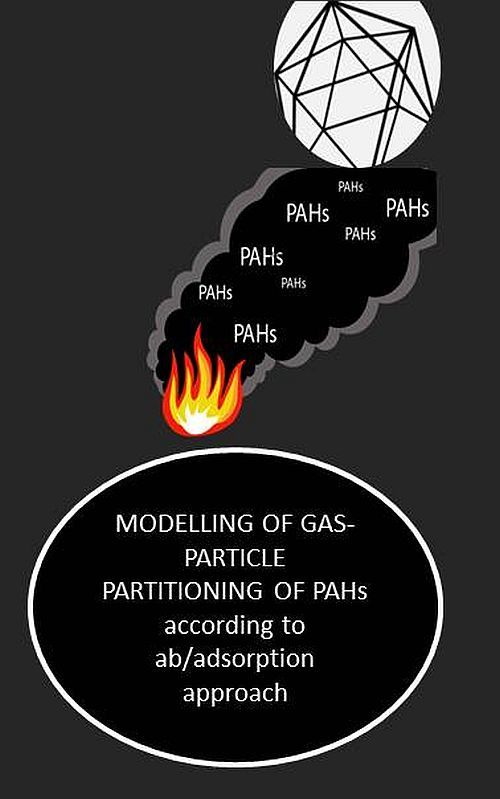Modelling of gas–particle partitioning of PAHs according to ab/adsorption approach Scientific paper
Main Article Content
Abstract
The new approach of the study was to assess the consistency between the gas–particle partition coefficients of 16 EPA (Environmental Protection Agency) polycyclic aromatic hydrocarbons (PAHs) predicted by the Dachs–Eisenreich ab/adsorption model and the experimental results obtained within the field measurements. A total number of 29 air samples was obtained at 9 locations in Serbia. High volume air sampler was applied, with quartz filters for collecting the atmospheric particles and polyurethane foam filters (PUF) for retaining the free gas molecules of PAHs. The results predicted by the model and the experimental data were compared. The deviations between the measured and predicted f (fraction) values were less than one order of magnitude for Flo, Phe, Ant, Flu, Pyr, B(a)A and Chr. For the PAHs with high molecular mass, B(b)F, B(k)F, B(a)P, I(1,2,3-cd)P, D(ah)A and B(ghi)P, very good agreement was confirmed, except for the data measured at the Oil refinery in Pančevo. The applied model underestimated the concentrations of PAHs in gas-phase for the low-molecular mass PAHs.
Downloads
Metrics
Article Details

This work is licensed under a Creative Commons Attribution-NonCommercial-NoDerivatives 4.0 International License.

Authors retain copyright and grant the journal right of first publication with the work simultaneously licensed under a Creative Commons Attribution license 4.0 that allows others to share the work with an acknowledgement of the work's authorship and initial publication in this journal.
References
J. Dachs, S. J. Eisenreich, Environ. Sci. Technol. 34 (2000) 3690 (https://doi.org/10.1021/es991201+)
J. F. Pankow, Atmos. Environ. 28 (1994) 185 (https://doi.org/10.1016/1352-2310(94)90093-0)
T. Harner, T. F. Bidleman, J. Chem. Eng. Data 32 (1998) 1494 (https://doi.org/10.1021/es970890r)
R. Lohmann, G. Lammel, Environ. Sci. Technol. 38 (2004) 3793 (https://doi.org/10.1021/es035337q)
J. Radonić, PhD Thesis, Faculty of Technical Sciences, Novi Sad, 2009, https://nardus.mpn.gov.rs/handle/123456789/1873 (in Serbian)
W. Wang, S. L. M. Simonich, W. Wang, B. Giri, J. Zhao, M. Xue, J. Cao, X. Lu, S. Tao, Atmos. Res. 99 (2011) 197 (https://doi.org/10.1016/j.atmosres.2010.10.002)
J. H. Seinfeld, S. N. Pandis, K. Noone, Phys. Today 51 (1998) 88 (https://doi.org/10.1063/1.882420)
J. Radonic, M. T. Sekulic, M. V. Miloradov, P. Čupr, J. Klánová, Environ. Sci. Pollut. Res. 16 (2009) 65 (https://doi.org/10.1007/s11356-008-0067-3)
K. T. Whitby, B. K. Cantrell, D. B. Kittelson, Atmos. Environ. 12 (1978) 313 (https://doi.org/10.1016/0004-6981(78)90213-5)
N. Vardar, Y. Tasdemir, M. Odabasi, K. E. Noll, Sci. Total Environ. 327 (2004) 163 (https://doi.org/10.1016/j.scitotenv.2003.05.002)
M. T. O. Jonker, A. A. Koelmans, Environ. Sci. Technol. 36 (2002) 3725 (https://doi.org/10.1021/es020019x)
D. Mackay, W.-Y. Shiu, W.-Y. Shiu, S. C. Lee, Handbook of Physical-Chemical Properties and Environmental Fate for Organic Chemicals, CRC Press, Boca Raton, FL, 2006, p. 4216 (https://doi.org/10.1201/9781420044393)
E. Galarneau, T. F. Bidleman, P. Blanchard, Atmos. Environ. 40 (2006) 182 (https://doi.org/10.1016/j.atmosenv.2005.09.034)
M. Turk Sekulic, J. Radonic, M. Vojinovic-Miloradov, N. Senk, M. Okuka, Hem. Ind. 65 (2011) 371 (https://doi.org/10.2298/hemind101013046t)
J. Radonić, D. Ćulibrk, M. V. Miloradov, B. Kukić, M. T. Sekulić, Therm. Sci. 15 (2011) 105 (https://doi.org/10.2298/TSCI100809005R)
M. Turk Sekulić, M. Okuka, N. Šenk, J. Radonić, M. Vojinović Miloradov, B. Vidicki, Atmos. Res. 128 (2013) 111 (https://doi.org/10.1016/j.atmosres.2013.03.013).





